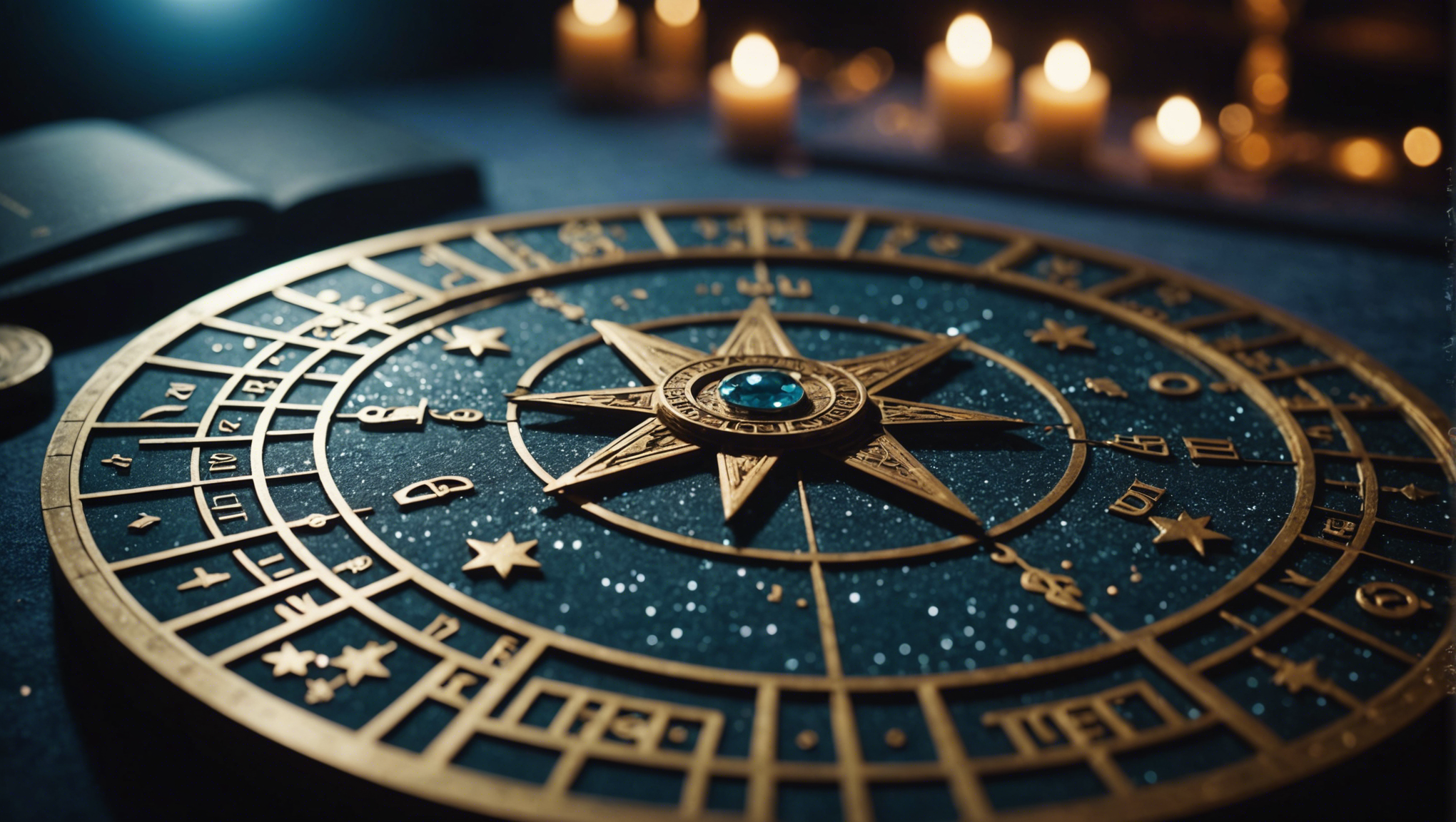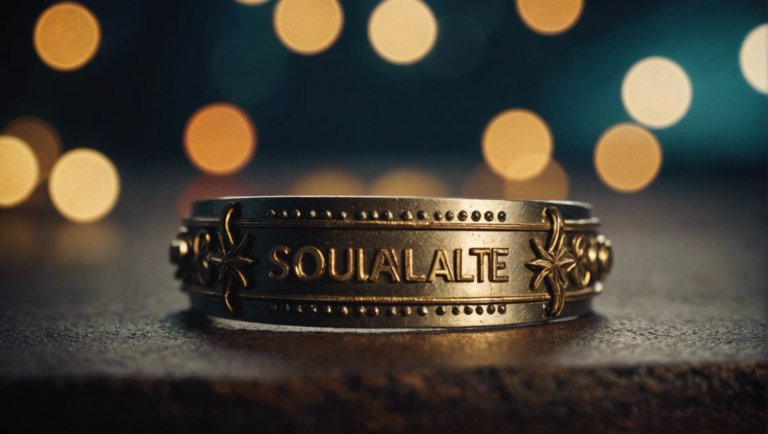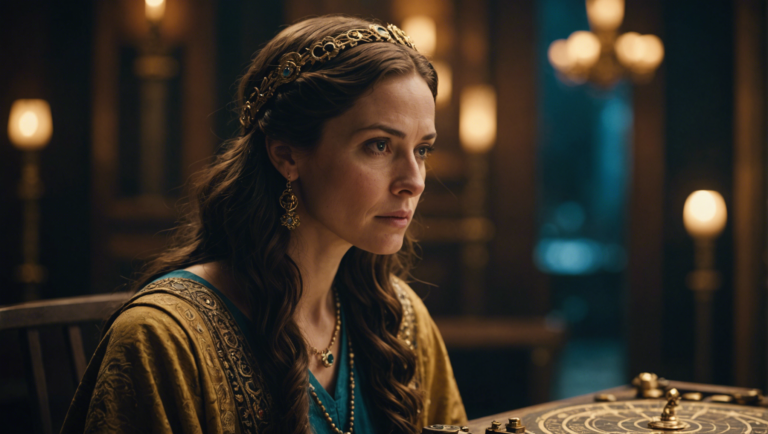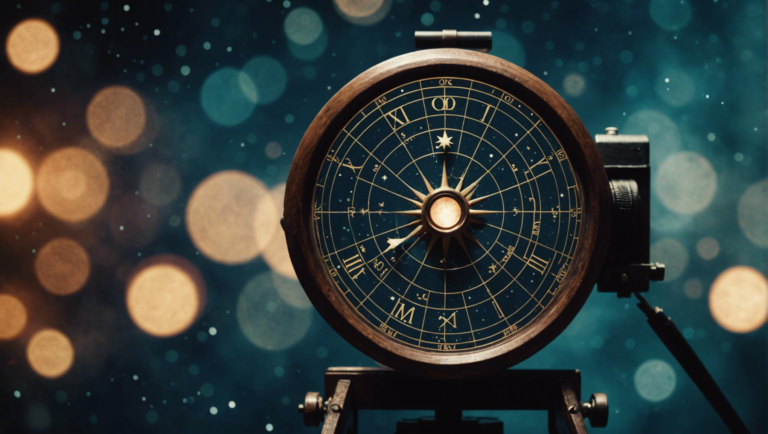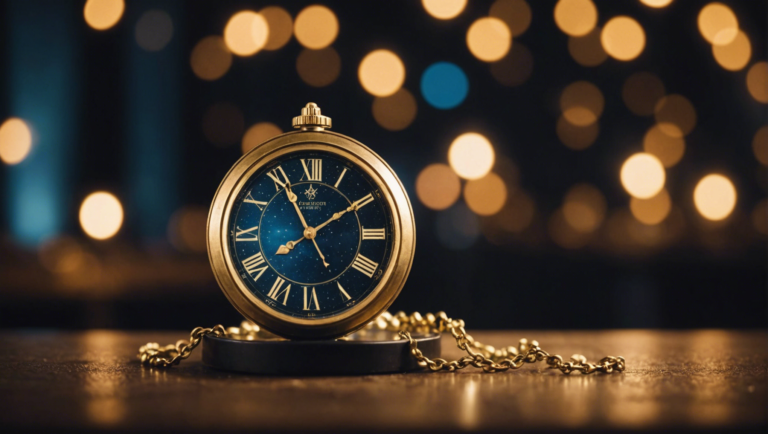What Religion Believes In Astrology And Crystals
Exploring the Intersection of Religion, Astrology, and Crystals
The Confluence of Spiritual Beliefs, Star Signs, and Crystal Healing
In the rich tapestry of human belief systems, few threads are as vibrant and as intertwined as those of religion, astrology, and the use of crystals for spiritual and physical healing. While mainstream religions have often maintained a cautious distance from astrology and crystal healing, attributing their practices to the realms of pseudoscience or superstition, there exists a fascinating intersection where some spiritual traditions not only embrace these elements but integrate them into the core of their beliefs and practices.
Spiritual Traditions Embracing Astrology and Crystals
Several spiritual paths blur the lines between religion and what is commonly referred to as "New Age" thinking, incorporating astrology and crystals into their worldview. These belief systems view the universe as an interconnected whole, where celestial movements influence earthly events and objects like crystals channel cosmic energies.
Wicca and Paganism: Earth-Centered Beliefs
Wicca, a modern pagan religion that draws upon a variety of ancient pagan and 20th-century hermetic motifs, actively incorporates both astrology and crystals into its practices. Wiccans attribute specific qualities and powers to gemstones and crystals, using them in rituals to attract love, prosperity, and protection. Astrology, too, is often used by Wiccans to determine the most auspicious times for rituals, reflecting the belief in the significance of celestial bodies on terrestrial life.
Hinduism: Ancient Astrological Traditions
Within Hinduism, one finds perhaps one of the oldest traditions of astrology, known as Jyotish, or Vedic astrology. This system, deeply embedded in the religious and cultural practices of India, uses the positions of celestial bodies at the time of birth to predict and influence the fortunes of individuals. Moreover, certain crystals and gemstones are prescribed in Vedic astrology to ward off negative influences of planets or to enhance their positive effects, integrating both astrology and crystal healing into its framework.
Buddhism and Crystals: Tools for Meditation and Healing
Though perhaps not as explicitly intertwined with astrology, Buddhism has a long history of using crystals in meditation practices. Crystals such as clear quartz are used to purify the mind and intensify meditative states, believed to connect the individual with higher states of consciousness. This reflects a broader tendency in many spiritual traditions to attribute transformative powers to natural elements.
The Role of Astrology and Crystals in Personal Spirituality
For many adherents to these and other spiritual paths, astrology and crystals offer a means of personalizing their practices and beliefs, providing a tangible connection to the cosmic and natural worlds. These practices are often seen as tools for self-reflection, healing, and empowerment, rather than deterministic systems that negate free will or personal agency.
Scientific Skepticism and Spiritual Practices
It’s important to acknowledge the presence of skepticism regarding the efficacy of astrology and crystals in producing tangible outcomes. Mainstream science often disputes the claims made by proponents of these practices, citing a lack of empirical evidence to support their effectiveness. However, within the communities that engage with these practices, the emphasis is often placed not on scientifically measurable results but on personal and spiritual growth.
Navigating the Intersection
The intersection of religion, astrology, and crystals represents a fascinating domain where spirituality and personal belief intersect with ancient traditions and the cosmos itself. While not all religions or spiritual paths embrace these elements, the ones that do offer a unique lens through which to view our place in the universe and our connection to the natural world. For many, integrating astrology and crystals into their spiritual life is a powerful means of enhancing wellbeing, fostering self-awareness, and navigating the complexities of human existence with a sense of harmony and purpose.
In an age where the thirst for meaning and spiritual connection persists, exploring these ancient yet enduring practices can offer insights and pathways that enrich the human experience beyond the material and into the profoundly spiritual.
Historical Perspectives on Astrological Practices in Spiritual Traditions
Exploring the Roots of Astrology in Spiritual Traditions
Astrology’s woven tapestry throughout history is intricate and profound, stretching across various cultures and spiritual traditions. This ancient practice, often seen as the bridge between the earth and the cosmos, has influenced and been influenced by religious beliefs since time immemorial. By examining the historical perspectives on astrological practices in spiritual traditions, we not only uncover the origins of astrology but also understand its enduring appeal and resilience through the ages.
Astrology in Ancient Civilizations
The cradle of astrology can be traced back to the ancient civilizations of Mesopotamia, Egypt, India, and China, where it was intricately linked with the spiritual and religious life of these cultures. Mesopotamians are credited with the earliest astrological records, dating back to the second millennium BCE. They believed that the movements and positions of celestial bodies could foretell future events and were reflections of the gods’ wills. Similarly, ancient Egypt’s religious rituals and structures, such as the pyramids, demonstrate a profound understanding of celestial alignments, emphasizing astrology’s importance in their spiritual worldview.
Astrological Practices in Eastern Religions
In Eastern traditions, astrology holds a pivotal role, particularly in Hinduism and Buddhism. Hindu astrology, or Jyotish Shastra, intertwines karma, reincarnation, and the cosmic cycle, offering insights into an individual’s life path and spiritual journey. The intricate Vedic astrology charts reflect the belief in a cosmic plan, where planetary positions at the time of birth influence one’s destiny. Buddhism, while less overtly astrological, incorporates lunar cycles in determining the dates of important festivals and reflects an awareness of astrology’s significance in the broader cultural context.
The Zodiac and Its Spiritual Significance
The zodiac, a key element in astrological practice, is more than a mere collection of signs and symbols. Each zodiac sign corresponds to specific energy or quality, deeply embedded in various spiritual traditions. For instance, the twelve signs of the zodiac in Western astrology are linked to Greek mythology, each carrying the characteristics and stories of gods, heroes, and mythic figures. This mythological framework adds a layer of spiritual significance to the astrology, offering archetypal paths for personal growth and understanding.
Astrology in Jewish Mysticism and Kabbalah
Jewish mysticism, or Kabbalah, presents another fascinating intersection of spirituality and astrology. Kabbalistic teachings delve into the esoteric aspects of the Torah, revealing hidden meanings and connections between celestial events and spiritual truths. Astrology, in this context, becomes a tool for understanding divine will and navigating one’s spiritual path with greater awareness.
The Renaissance and the Revival of Astrological Practices
The Renaissance period marked a significant revival of astrological practices, blending them with newly rediscovered ancient texts and emerging scientific discoveries. Astrology during this era was not only a subject of intellectual and spiritual pursuit but also became integrated into the fabric of daily life. Notable figures such as Marsilio Ficino and Pico della Mirandola explored astrology’s philosophical dimensions, emphasizing its role in understanding human nature and the divine.
Astrology Today: A Resurgence of Interest
In contemporary times, there has been a resurgence of interest in astrology, reflecting a collective search for meaning, guidance, and connection to the cosmos. This renewed fascination is not confined within the boundaries of traditional religion; instead, it represents a diverse and inclusive spiritual movement. Modern astrology, with its emphasis on psychological and humanistic aspects, offers individuals a tool for self-reflection and growth, illustrating the timeless and universal appeal of astrological practices.
The Continuous Influence of Astrology in Spiritual Realms
Astrology’s historical journey reveals its profound and enduring influence on spiritual traditions across the globe. From ancient civilizations to modern societies, astrology has served as a bridge between the earthly and the celestial, providing insights into the human experience and our connection to the universe. As we continue to explore and understand the cosmos, astrology remains a testament to humanity’s enduring quest for knowledge, meaning, and spiritual connection.
Crystals in Worship: From Ancient Rituals to Modern Spirituality
The intertwining of crystals in religious and spiritual practices spans millennia, echoing the reverberations of ancient wisdom through the corridors of modern spirituality. These natural wonders have been revered, not just for their beauty, but as conduits of energy and symbols of the divine. This deep-rooted veneration forms a fascinating tapestry that weaves together the old with the new, the mystical with the tangible.
Bridging Ancient Beliefs and Modern Faith
The allure of crystals and their integration into worship practices trace back to ancient civilizations. From the Egyptian use of lapis lazuli to safeguard the soul to the Hindu tradition of utilizing crystal quartz to balance the chakras, crystals have been integral to spiritual rituals. This ancient wisdom continues to resonate within modern spirituality, unfolding in practices that range from crystal healing sessions to their use in meditative practices.
The seamless blend of these age-old beliefs with contemporary spirituality illustrates a profound respect and understanding of nature’s gifts. It underscores a universal quest for connection and enlightenment that transcends temporal confines.
The Energy Within: Crystals in Contemporary Spiritual Practices
At the heart of modern spiritual practices involving crystals is the notion of energy. Each crystal is believed to hold specific vibrations that can align, clear, or enhance human energy centers, or chakras. For example, amethyst is treasured for its purported ability to calm and purify, making it a popular choice for meditation spaces.
This adoption of crystals in spiritual rituals speaks to a broader movement towards holistic well-being, where the spiritual, emotional, and physical dimensions of life are intricately connected. It reflects a holistic approach to spirituality that embraces earth’s resources as tools for healing and growth.
From Ritual Tools to Spiritual Symbols
Beyond their role as energy conduits, crystals also serve as powerful symbols in religious and spiritual contexts. Their varied colors, shapes, and luminosities are often imbued with specific meanings. For instance, the clear quartz, with its pristine clarity, symbolizes purity and is often used in rituals aimed at cleansing or manifesting intentions.
This symbolic utilization of crystals provides a tangible way to connect with the metaphysical realm, offering physical embodiments of spiritual concepts. It invites a deeper engagement with the mysteries of the universe, grounded in the tangible beauty of the natural world.
Scientific Scrutiny and Spiritual Belief
While the efficacy of crystals in spiritual practices is a topic of debate among scientists, the value of these practices often lies in the experiential. Many who integrate crystals into their spiritual rituals report profound personal transformations, citing increased mindfulness, better emotional balance, and a deeper sense of connection to the divine.
This anecdotal evidence highlights the subjective nature of spirituality, where personal experience and belief hold significant power. It underscores the idea that the spiritual significance of crystals, like all matters of faith, transcends empirical proof.
Nurturing the Connection: Crystals in the Digital Age
In the digital age, the ancient practice of using crystals in worship has found new expressions. Online communities dedicated to crystal healing, blogs offering guidance on crystal meditation, and e-commerce platforms specializing in ethically sourced crystals are nurturing a global connective tissue. This digital renaissance of crystal spirituality exemplifies the enduring appeal of these natural wonders and their ability to adapt to the evolving landscape of faith and belief.
By fostering global conversations and sharing knowledge across cultures, the internet has played a pivotal role in the resurgence and adaptation of crystal-based spirituality. It has opened new avenues for exploration and connection, rooted in ancient traditions yet fully engaged with the present.
Embracing the Mystical Journey
The journey of crystals in worship from ancient rituals to modern spirituality is a testament to humanity’s enduring fascination with the natural world and the mysteries it holds. It reflects a collective aspiration towards understanding, healing, and connection, bridging the tangible with the transcendent.
As we navigate the complexities of modern life, the humble crystal serves as a reminder of the beauty and depth of our spiritual quests. It invites us to explore the infinite possibilities that lie at the intersection of the ancient and the contemporary, the scientific and the mystical, the earth and the divine.
The Role of Astrology in Shaping Religious and Spiritual Beliefs
Understanding the Intersection of Astrology and Spirituality
Astrology and crystals have long fascinated human-kind, transcending beyond mere curiosity to profoundly influence various religious and spiritual beliefs around the globe. This deep-seated connection reveals not only the human tendency to seek meaning in the cosmos but also illustrates the intricate ways in which astrology and religious practices intertwine, shaping each other as well as individual and cultural identities.
The Historical Context and Modern Resurgence
Astrology, with its origins tracing back thousands of years, has played a significant role in the formation of many spiritual traditions. Ancient civilizations such as the Babylonians, Egyptians, and Mayans, meticulously observed the heavens, believing that celestial bodies influenced earthly events and individual destinies. This respect for the stars and planets found its way into their religious texts, rituals, and temples, laying a foundation that would endure across centuries.
In modern times, there has been a resurgence of interest in astrology and crystals, particularly within New Age movements and alternative spirituality. Unlike traditional religions that might view astrology with skepticism, these contemporary spiritual paths embrace it as a tool for self-discovery, personal growth, and understanding the universe’s interconnectedness.
Exploring Beliefs: Astrology in Religious Contexts
While no single religion universally acknowledges astrology and crystals as central tenets, several spiritual traditions and sects view them with reverence and incorporate astrological concepts into their beliefs and practices. For example:
- Buddhism and Hinduism: Both of these religions have historical ties to astrological practices. Hinduism, in particular, holds Vedic astrology in high regard, where it is seen as a key to unlocking life’s mysteries, guiding individuals on matters ranging from marriage to career choices.
- Paganism and Wicca: These Earth-centered religions celebrate the natural world and its cycles, including the movements of celestial bodies. Astrology is often used by practitioners to determine auspicious times for rituals and to deepen their connection to natural energies.
- New Age Spirituality: Although not a religion per se, New Age spirituality synthesizes elements from various traditions, including astrology and crystal healing. Proponents find in these practices tools for personal transformation and enlightenment, often blending them with elements of Eastern and Western mysticism.
The Role of Crystals in Spiritual Practices
Crystals, revered for their beauty and perceived metaphysical properties, also occupy a significant place in many spiritual practices. From crystal healing sessions to their use in meditation and rituals, these natural elements are believed to carry specific energies that can influence physical and emotional well-being.
In cultures around the world, crystals have been used for protection, healing, and as talismans imbuing strength, love, and prosperity. The belief in the power of crystals intersects with astrology through the association of certain stones with zodiac signs or planets, purportedly amplifying their cosmic influence.
Navigating the Skepticism
Despite their widespread popularity and historical roots, astrology and crystal practices face skepticism, especially within more orthodox religious contexts. Critics argue against the scientific validity of astrology and the efficacy of crystals, categorizing them as pseudosciences or superstitions.
However, for many individuals, these practices offer a sense of comfort, insight, and connection to the universe that transcends empirical scrutiny. It is the personal experiences and testimonies of positive change that continue to draw people towards astrology and crystals, indicating a broader desire for spirituality that accommodates personal interpretation and exploration.
The Synthesis of Cosmic and Earthly Realms
The interplay between astrology, crystals, and spirituality signifies a profound human endeavor to understand life’s mysteries, blending the cosmic and earthly into a coherent, meaningful worldview. As contemporary society becomes increasingly pluralistic, the boundary between mainstream religions and these ancient practices continues to blur, fostering a dynamic spiritual landscape where individuals are free to find truth and guidance in the stars and stones alike.
Navigating the Skepticism: Astrology, Crystals, and Scientific Scrutiny
Astrology and crystals have long fascinated humanity, weaving their way through various cultures and traditions. While some view these practices with a deep sense of spirituality and belief, others approach them with skepticism, particularly from a scientific standpoint. This article delves into the complex relationship between these ancient practices and modern scientific scrutiny, exploring the perspectives of believers and skeptics alike.
Embracing the Mystical: Astrology and Crystals in Cultural Practices
Astrology, the study of the movements and relative positions of celestial bodies interpreted as having an influence on human affairs and the natural world, has roots in several ancient civilizations. Its practice spans from the Babylonians and Egyptians to the Greeks and Romans, each adding their own interpretations and nuances to the astrological lore. Crystals, with their purported healing energies and power to affect the user’s spirit and environment, share a similar storied history. Cultures around the world have revered crystals for their beauty and alleged mystical properties, using them in rituals, healing practices, and as protective amulets.
Despite the absence of empirical evidence supporting the efficacy of astrology and crystals in affecting tangible outcomes in human affairs, their popularity persists. This endurance can be attributed to various factors, including human nature’s tendency to seek patterns, the comfort found in rituals, and the psychological benefits of having something to believe in during times of uncertainty.
Scientific Scrutiny and the Demand for Evidence
The rise of the scientific method and empirical research has placed astrology and crystal healing under intense scrutiny. Scientists argue that there is no physical mechanism by which the positions of stars and planets at the time of one’s birth can influence an individual’s personality or future events. Similarly, rigorous studies fail to show that crystals possess any healing properties beyond the placebo effect. This skepticism is not intended to diminish the personal value individuals find in these practices but to highlight the lack of scientific evidence supporting their effectiveness.
Critics often point to confirmation bias as a reason why believers in astrology and crystals may experience or perceive benefits. This psychological phenomenon describes the human tendency to remember information that confirms our preconceptions and ignore that which does not. For astrology, this might mean remembering all the times a horoscope seemed accurate while forgetting the misses. For crystals, it might involve attributing any positive change in well-being to the crystal, without considering other factors that could be responsible.
Bridging the Gap: Finding Common Ground
Despite the divide, there is a possibility for a nuanced understanding that respects both the personal significance of these practices and the demand for scientific rigor. One approach is to appreciate astrology and crystals as tools for self-reflection and meditation, rather than for empirical prediction or physical healing. From this perspective, their value lies not in their ability to change the future or alter physical health but in their capacity to inspire introspection, provide comfort, and foster a sense of connection with the universe.
Critical Thinking and Personal Beliefs
Individuals navigating the waters between belief in astrology and crystals and adherence to scientific skepticism are encouraged to cultivate critical thinking alongside an openness to personal spirituality. Asking probing questions, seeking diverse sources of information, and being willing to revise one’s beliefs in the light of new evidence are crucial skills in this journey.
Furthermore, the conversation between skeptics and believers benefits from approaching each other with empathy and understanding. Recognizing that deeply held beliefs are often tied to core aspects of one’s identity can facilitate more respectful and constructive dialogues.
A Harmonious Coexistence
The debate between the mystical allure of astrology, crystals, and scientific scrutiny may never be fully resolved. However, finding a middle ground that acknowledges the psychological and emotional benefits these practices offer, while also holding space for critical inquiry and evidence-based reasoning, could foster a more inclusive and understanding society. Both realms possess their unique value – one in providing comfort and a sense of wonder, the other in its relentless pursuit of truth and understanding. Together, they mirror the complex and multifaceted nature of human experience, encouraging a richer exploration of our world and ourselves.
Conclusion
The exploration of the intertwined paths of religion, astrology, and crystals uncovers a profound connection that transcends cultures and centuries. These practices, often viewed through the lens of mysticism and spirituality, have served as cornerstones for belief systems, rituals, and personal enlightenment throughout human history. As we delve into the historical perspectives on astrological practices within spiritual traditions, it is clear that these ancient practices were not merely forms of divination but integral components woven into the very fabric of religious experience and understanding. They provided societies with a means to interpret the cosmos, align with celestial energies, and seek guidance in the mundane aspects of life as well as the sacred.
The reverence for crystals and their incorporation into worship settings—from the dimly lit chambers of ancient temples to the bright and modern spaces of today’s spiritual communities—highlights the enduring fascination with these earth-bound treasures. Their perceived powers to heal, protect, and enhance spiritual connectivity continue to resonate with individuals seeking to deepen their spiritual practices. This enduring appeal of crystals within sacred contexts illustrates humanity’s innate desire to connect with the natural world in a manner that enriches the spiritual journey.
Astrology’s role in shaping religious and spiritual beliefs further illuminates the complex nature of faith and the cosmos. Far from being a mere predictive tool, astrology has offered philosophical frameworks that assist in understanding the mysteries of human existence and the divine. The celestial cycles, movements, and alignments have been interpreted as divine messages or omens, influencing the unfoldment of religious narratives and practices. This celestial guidance has shaped festivals, sacred rites, and even the architectural orientation of religious sites, embedding the practice deeply into the spiritual DNA of numerous faiths.
Navigating the skepticism that surrounds astrology and crystals, especially from the viewpoint of scientific scrutiny, reveals a broader discussion about belief, evidence, and the nature of reality. The scientific community often dismisses these practices for their lack of empirical grounding. However, this skepticism is met with a resilient belief in personal experience and the subjective truths found within these ancient systems. The continued relevance of astrology and crystals in modern spirituality speaks to an enduring human quest for meaning, connection, and a deeper understanding of the cosmos. It highlights a collective yearning for integration and harmony with the universe—an aspiration that transcends empirical evidence and dwells in the realm of faith and belief.
This journey through the realms of religion, astrology, and crystals unveils a tapestry of human spirituality that is both diverse and unified in its quest for understanding. It brings forth the realization that these practices, steeped in tradition and shrouded in mystery, serve not only as conduits to the divine but as mirrors reflecting the innate human desire to explore the unknown. They encourage an ongoing dialogue between the material and the mystical, fostering a rich landscape of spiritual exploration that continues to evolve with each generation.
As we stand at the intersection of ancient wisdom and modern spirituality, it becomes evident that the commitment to exploring these realms is not just about unearthing historical practices but about seeking a deeper resonance within our own spiritual journey. It is a testament to the enduring power of astrology and crystals within religious and spiritual contexts—a bridge between the earthly and the divine, guiding humanity through the ebbs and flows of existence with the silent wisdom of the stars and the steadfast presence of the Earth’s treasures.

